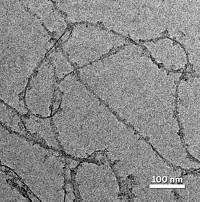Advertisement
Grab your lab coat. Let's get started
Welcome!
Welcome!
Create an account below to get 6 C&EN articles per month, receive newsletters and more - all free.
It seems this is your first time logging in online. Please enter the following information to continue.
As an ACS member you automatically get access to this site. All we need is few more details to create your reading experience.
Not you? Sign in with a different account.
Not you? Sign in with a different account.
ERROR 1
ERROR 1
ERROR 2
ERROR 2
ERROR 2
ERROR 2
ERROR 2
Password and Confirm password must match.
If you have an ACS member number, please enter it here so we can link this account to your membership. (optional)
ERROR 2
ACS values your privacy. By submitting your information, you are gaining access to C&EN and subscribing to our weekly newsletter. We use the information you provide to make your reading experience better, and we will never sell your data to third party members.
Environment
Superoxide-Producing Fungus Sponges Up Mine Metals
Environmental Remediation: Common fungus drives manganese oxidation that cleans up polluted water from coal mines
by Deirdre Lockwood
July 26, 2012

Fungus, not bacteria, may be the star microbial agent that cleans up metals in some coal mine drainage systems, according to work from geochemists (Proc. Natl. Acad. Sci. USA, DOI: 10.1073/pnas.1203885109).

Colleen M. Hansel, a microbial geochemist at Harvard University and Woods Hole Oceanographic Institution, and colleagues report that a common ascomycete fungus found in mine drainage treatment systems promotes production of manganese oxides. These compounds are well-known environmental sponges that scavenge and sequester toxic metals such as lead, copper, and zinc.
Combining light microscopy with synchrotron-based X-ray absorption spectroscopy and fluorescence microscopy, the researchers showed that the fungus oxidizes soluble Mn(II) by producing superoxide extracellularly during asexual reproduction. This superoxide reacts with Mn(II), causing precipitation of brown Mn(III) and Mn(IV) oxides on the base of the fungus’ reproductive structures.
The work could help in bioremediating mine drainage, says Bradley M. Tebo, a microbiologist at Oregon Health & Science University.
The research began when Hansel teamed up with William Burgos, a Pennsylvania State University environmental engineer who was helping figure out why some mine treatment sites in central Pennsylvania worked and some didn’t, Hansel says. Some sites added corn cobs and straw to limestone treatment beds, creating an environment that may have selected for fungi, she says.
In the treatment beds where the researchers found the superoxide-producing fungi, Hansel says, “the water coming out the other side is as clean as you can get.”
Cara M. Santelli, a coauthor of the study who is now at the Smithsonian Institution, is researching what carbon and nutrient sources could encourage these fungi to oxidize Mn(II) more efficiently, Hansel says.
Hansel and colleagues have also found other types of fungi and a marine bacterium that oxidize Mn(II) by producing superoxide.




Join the conversation
Contact the reporter
Submit a Letter to the Editor for publication
Engage with us on Twitter